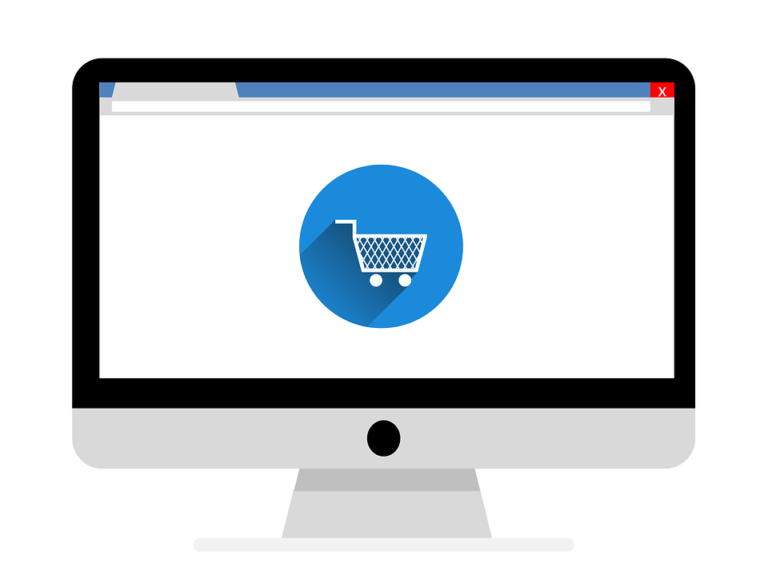A little work beforehand can help start your business down the right path toward success. Before setting up shop online, check out these four strategies to help you launch a successful ecommerce business.
- Develop a marketing strategy
The Field of Dreams approach “If you build it, he will come” no longer exists in today’s business world. Every industry is saturated with competing suppliers and this is especially true in ecommerce. Consumers have countless options when it comes to online retail stores, and huge ecommerce sites like Amazon and Etsy continue to dominate the industry.
Before you start your ecommerce business – or any business for that matter – research is essential to figuring out who will be buying your products. If you simply put up a site and sit back hoping someone comes by to make a purchase, your business will never reach its fullest sales potential because no one will know the site exists.
Therefore, take some time to distinguish who your target audience is so you can begin to better understand which techniques will work to capture their attention. For example, does your target audience attend trade shows and festivals? Would local media advertising via TV or Radio reach your audience? Answers to these questions can bring you closer to understanding who your customers are, and which advertising options will work best for getting the information in front of them. Additionally, if used correctly, social media sites can help you to reach a larger audience by generating brand advocacy since people like to share their product experiences with friends.
Once you have an idea of which marketing techniques you will use to get in front of your customers, you can begin planning how you will measure your success. Decipher which metrics you want to monitor by what you want to accomplish, such as increasing traffic to your site, lowering cart abandonment, or increasing the frequency of repeat customers. After establishing your metrics, take a look at which online analytics tools are best to track this. The most well known and free option is Google Analytics, but there are other tools out there which may fit your analytic needs better such as KISSmetrics.com and Clicky.com.
- Institute an efficient fulfillment plan
Fulfillment is a critical component of ecommerce success because it is an extension of the customer experience; having a bad fulfillment strategy can blemish a brand’s reputation, damage customer relationships, and risk sales to competitors. Fulfillment is also a long-term expense, from inventory and storage, to packaging and shipment. One way to estimate fulfillment costs to your business is to use a pricing tool, like the one available at Shipwire.com. Shipwire is a logistics company that manages all the fulfillment obligations associated with an ecommerce business and their online pricing tool can provide you with a general idea of the overall costs to outsourcing fulfillment operations.
Many of the ecommerce platforms out there offer their own fulfillment options. Ecommerce-platforms.com is a great resource when researching the right platform for your new business, and their list of the top ecommerce platforms provides a comprehensive review of the ten most popular sites. While you review the list, it may be tempting to go with a cheaper option or lower fulfillment cost; but this approach may actually hurt your business if the site is not scalable. You need to build your ecommerce site with the intention that your business will be growing and expanding in the future. If you decide to go with the platform that offers the cheapest upfront costs, you may end up paying more to grow later.
- Calculate prices to make back fees and costs
Using well-known ecommerce sites like eBay can initially work to your advantage because their already established platforms can effectively attract customers and lead them to your products. Yet, the fees associated with those sites can be fairly steep and you may find that a majority of your earnings are going toward seller fees. For this reason, understanding your financials becomes essential.
When you decide to branch off and launch your own ecommerce site, there are other overhead costs you need to consider such as hosting and site maintenance fees, in addition to the material and labor costs, transaction fees and fulfillment costs. By identifying these overall expenses, you can calculate how many units you need to sell in order to cover your costs and make a profit.
If you have questions about managing business financials, take the time before you launch your business to meet with an Inland Empire SBDC Business Consultant. These appointments are always at no cost, and our consultants can help guide you in figuring out if your business is financially feasible before you start.
- Build customer loyalty and retention
When your customers first find your business, it’s best to always assume that you have to get them to trust you before they will buy. Building trust with your customers can be done in a variety of ways and should revolve around making your business appear accessible and transparent. The easiest way to achieve this is to have a phone number visible on your site; this gives people a sense of security knowing that they can reach your company if they need questions answered.
Also customer product reviews can be influential in building trust with potential clients, as supported in a 2013 survey study which found that 90% of consumer purchases were influenced by peer reviews. If you don’t have any product reviews just yet, you can redirect people to reputable sites that have reviews, including consumer reports and magazines. Don’t point your costumers to your competitors, but rather point them to where they can find information about the product; this will build trust because the links on your site have helped them to make an informed decision about their purchase from you.
Always clearly state policies, especially your return policy, on your site and make it easy to find. Being upfront with costs and estimated delivery dates is also a good way to show your business is transparent. Don’t hide shipping and handling fees and let customers know if items they ordered may take longer to receive. By disclosing this information upfront, your customers won’t feel like they are buying under false pretenses.
Your ecommerce site should mimic the in store experience as much as possible and make the buying and receiving experiences personal and enjoyable. Running a business that has an image of being transparent and accessible not only helps to retain existing customers; it can help to build trust with new customers. By applying these strategies when planning your ecommerce site, you’re giving your business the chance to start strong and have continuous growth.
____________________________________________________________________________________
If you want to learn more about starting you own ecommerce business, attend our free ecommerce workshop series presented by Joe Martinico of Joe Martinico Enterprises. This two part series offers a general overview of how to start an ecommerce business, and include the workshops “Succeeding Online” and “Marketing Automation”. Event details and registration available at www.iesmallbusiness.com












